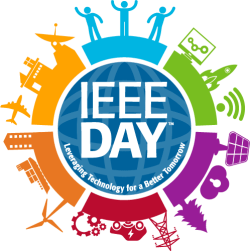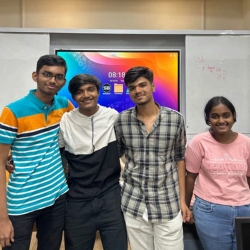Jay Wright Forrester was born in 1918 on a cattle ranch near Anselmo, Nebraska, in the middle of the United States. His early interest in electricity was spurred, perhaps, by the fact that the ranch had none. While in high school, he built a wind-driven, 12-volt electrical system using old car parts—it gave the ranch its first electric power. After finishing high school, he had received a scholarship to go to the Agricultural College. Three weeks before enrolling, he realized a future of herding cattle in Nebraska winter blizzards had never appealed to him. So instead in 1936 he enrolled in the Engineering College at the University of Nebraska to study Electrical engineering. As it turns out this study was about the only academic field with a solid, central core of theoretical dynamics.
After finishing the University in 1939 he went to the Massachusetts Institute of Technology, to become a research assistant and eventually spend his entire career. In his first year at MIT he was commandeered by Gordon S. Brown who was the pioneer in “feedback control systems” at MIT. During World War II his work with Gordon Brown was in developing servomechanisms for the control of radar antennas and gun mounts. This work was research toward an extremely practical end that ran from mathematical theory to the operating field. Experimental units were installed on the USS Lexington, and, when they stopped working, he volunteered to go to Pearl Harbor in 1942. He fixed the problem when the ship sailed off-shore during the invasion of Tarawa.
At the end of the war at MIT Forrester in 1944 started a project building of an aircraft flight simulator. The aircraft simulator was planned as an analog computer, but became the Whirlwind digital computer for experimental development of military combat information systems. This eventually became the SAGE (Semi-Automatic Ground Environment) air defense system for North America. Around 1949, the Navy was losing interest in Whirlwind and considered scrapping it. But that August, the Soviet Union detonated its first atomic bomb. Relations between the U.S. and its former ally had so deteriorated that this event inspired worry and alarm throughout the government. People in the military realized that computers would be essential in the defense of the country now that the USSR had the capacity to attack from afar. Whirlwind, as the Navy’s most advanced computer, suddenly looked good again. Forrester continued his research in electrical and computer engineering until 1956. By then he felt the pioneering days in digital computers were over and he left engineering to go into management.
In 1956, Forrester moved to the MIT Sloan School of Management, where he is currently Germeshausen Professor Emeritus and Senior Lecturer. Application of his engineering view of electrical systems to the field of human systems would break new ground. Forrester focused on concrete experimental studies of organizational policy. He used computer simulations to analyze social systems and predict the implications of different models. This method came to be called “system dynamics,” and Forrester came to be recognized as its creator.
In 1982, he received the IEEE Computer Pioneer Award. In 1989, he received the National Medal of Technology. In 2006, he was inducted into the Operational Research Hall of Fame.
1977 Harry H. Goode Memorial Award Recipient
“In recognition of his pioneering achievements in the development of random-access, coincident-current magnetic core storage, which is now the standard memory device for digital computers; for his innumerable contributions in the design and construction of Whirlwind I, one of the first high-speed digital computers; for his landmark achievements in the development of computer modeling and simulation techniques, including their application to a wide range of social systems; for his leadership in the development of the field of system dynamics and its applications in exploring alternate policies at the industrial, urban, national, and international levels; and for his many additional contributions to the development of information processing, its applications to social systems, and the dissemination of information on such developments through a series of papers and books.”
Learn more about the Harry H. Goode Memorial Award










